
Horse Colour Chart by Gaurdianax on DeviantArt
Smoky Cream. Another rare color is the smoky cream. These horses have black as their base coat, with dark pink skin coloring and blue or glass eyes. The smoky color comes from a double cream dilution gene. The result is a pale, coffee-to-cream hue with manes and tails in smoky blue, yellow, sooty, or coffee-brown.
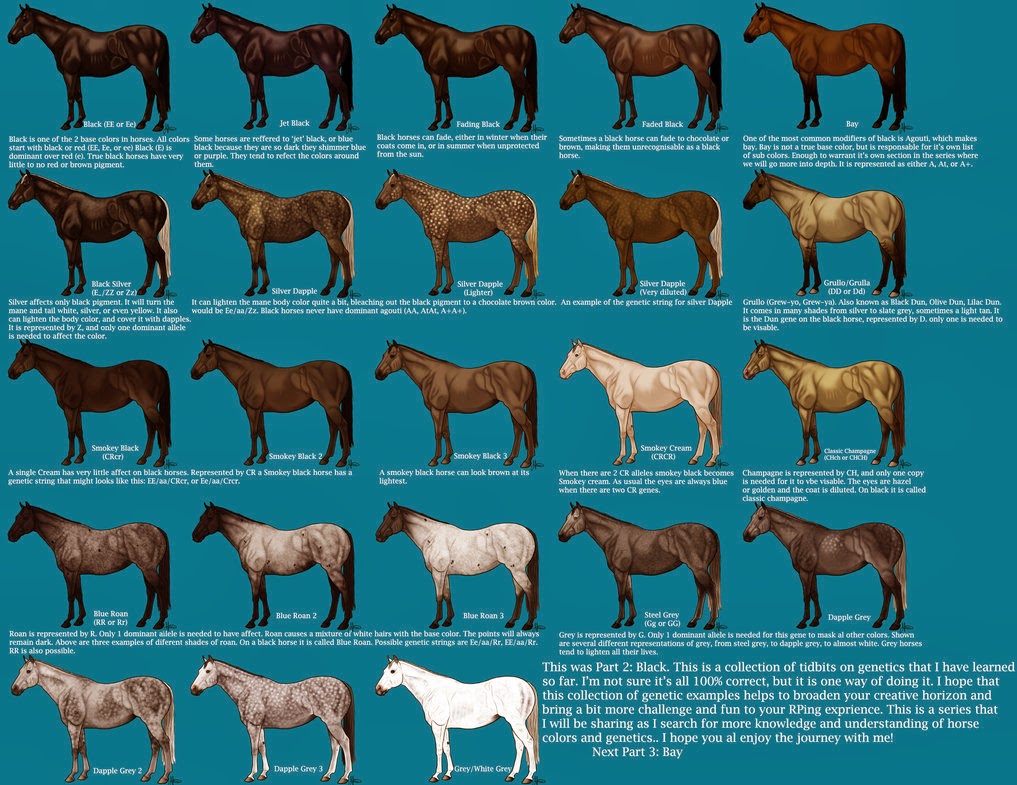
Iowa Grognard Horse Color Charts
The dazzling array of horse coat colors originates from just two primary pigments: black and red. From these, four fundamental colors emerge: black, gray, bay, and chestnut. The various shades we observe stem from the interplay—or occasionally, the absence—of these pigments, creating a wide spectrum of beautiful colors.
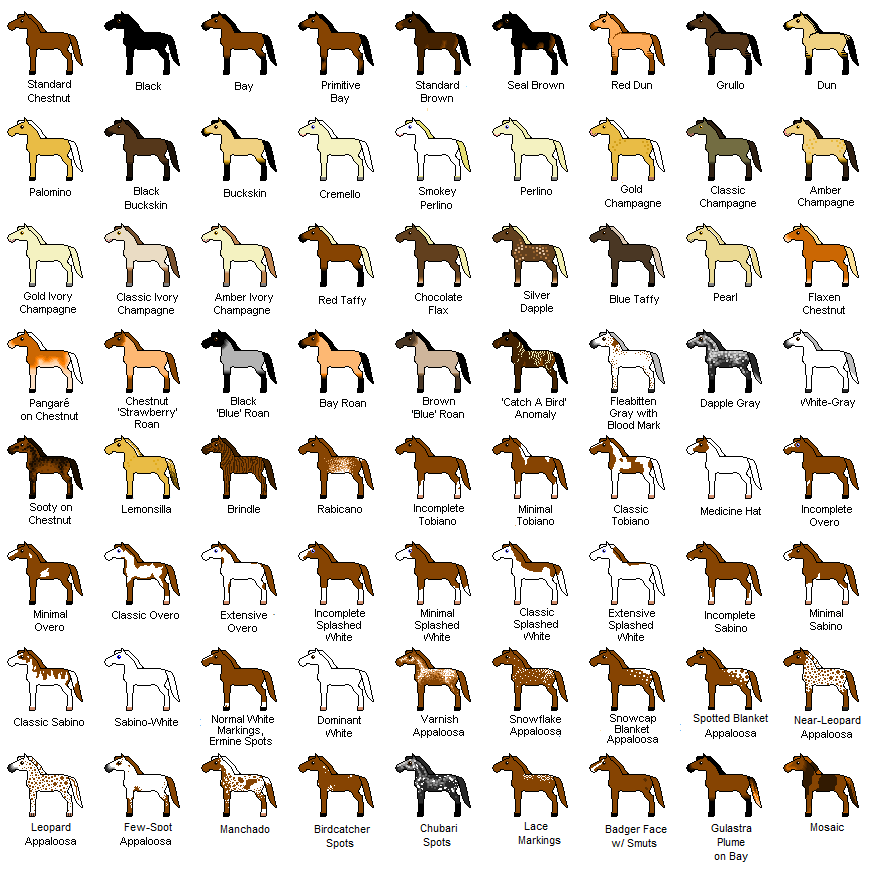
lockwood horses horse colors
Having various color patterns, these creatures become more unique and exquisite by pleasing the eye of their owners. Here we described the most typical horse colors as well as their patterns but the list can be extended with rarer colorings and markings. We also included a horse color chart to show how different the horse coat color pattern may be.
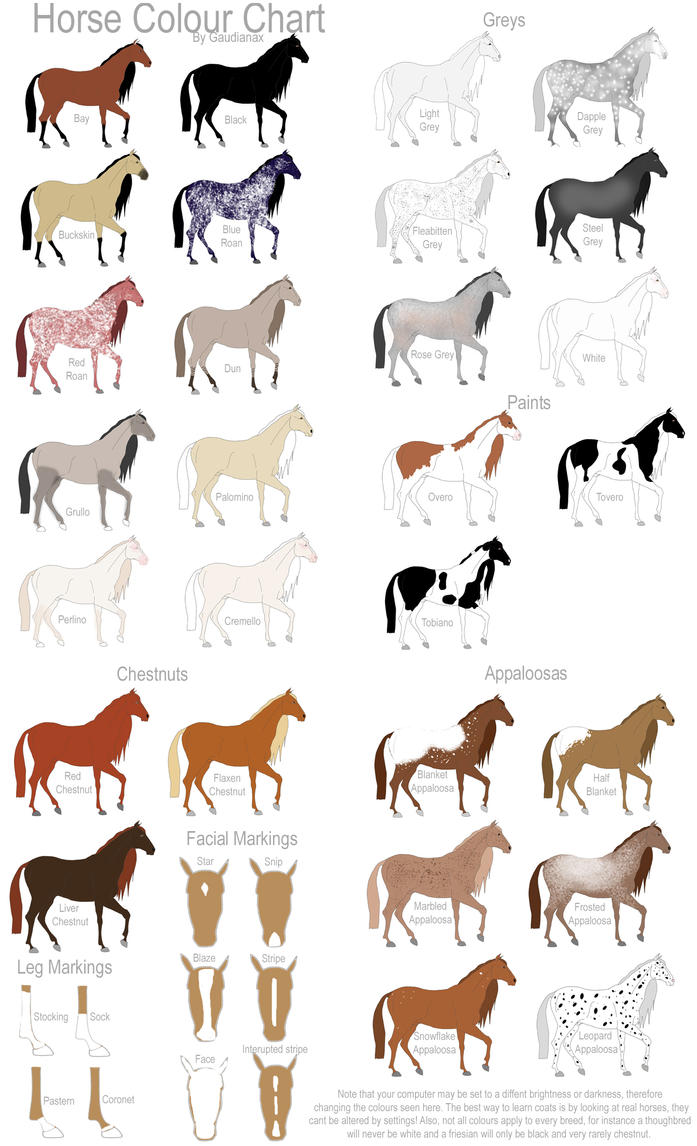
Horse Colour Chart by Gaurdianax on DeviantArt
Horse Color#1: Black If a horse is truly black, it should have no other color in its coat besides potential white markings on its face or legs. Many horses that appear to have a black coat aren't truly black but instead have a dark bay coat.

horse Color Chart by MagicWindsStables on DeviantArt
The most common horse colors and patterns are bay, chestnut, gray, black, pinto, and dun. A horse's color is determined by many factors such as breed, genetics, age, and even season. Here is a helpful horse coat color chart: Credit: horsebreedspictures.com While many horses retain their original color at birth, this is not always the case.
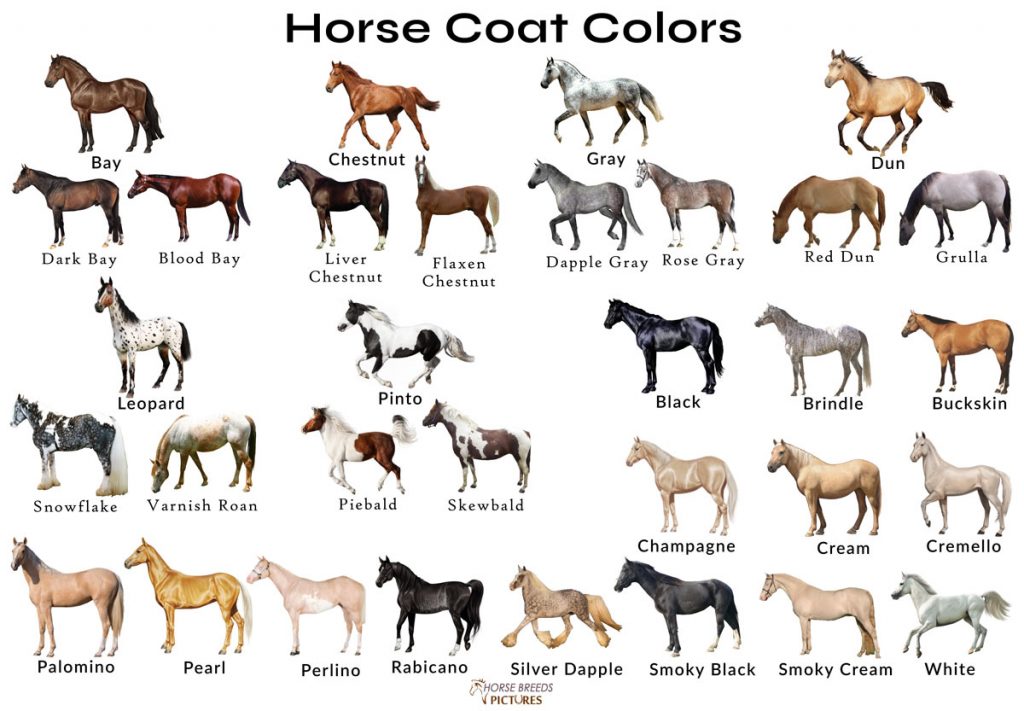
Different Horse Colors with Pictures
Equine color comes down to two basic pigments: black and red. Stacey Nedrow-Wigmore Just to get things started… did you know that gray isn't considered a color, but rather a pattern of white hairs? Read on! The ABCs of Color Actually, the above subhead should read "The A's & B's of Color."
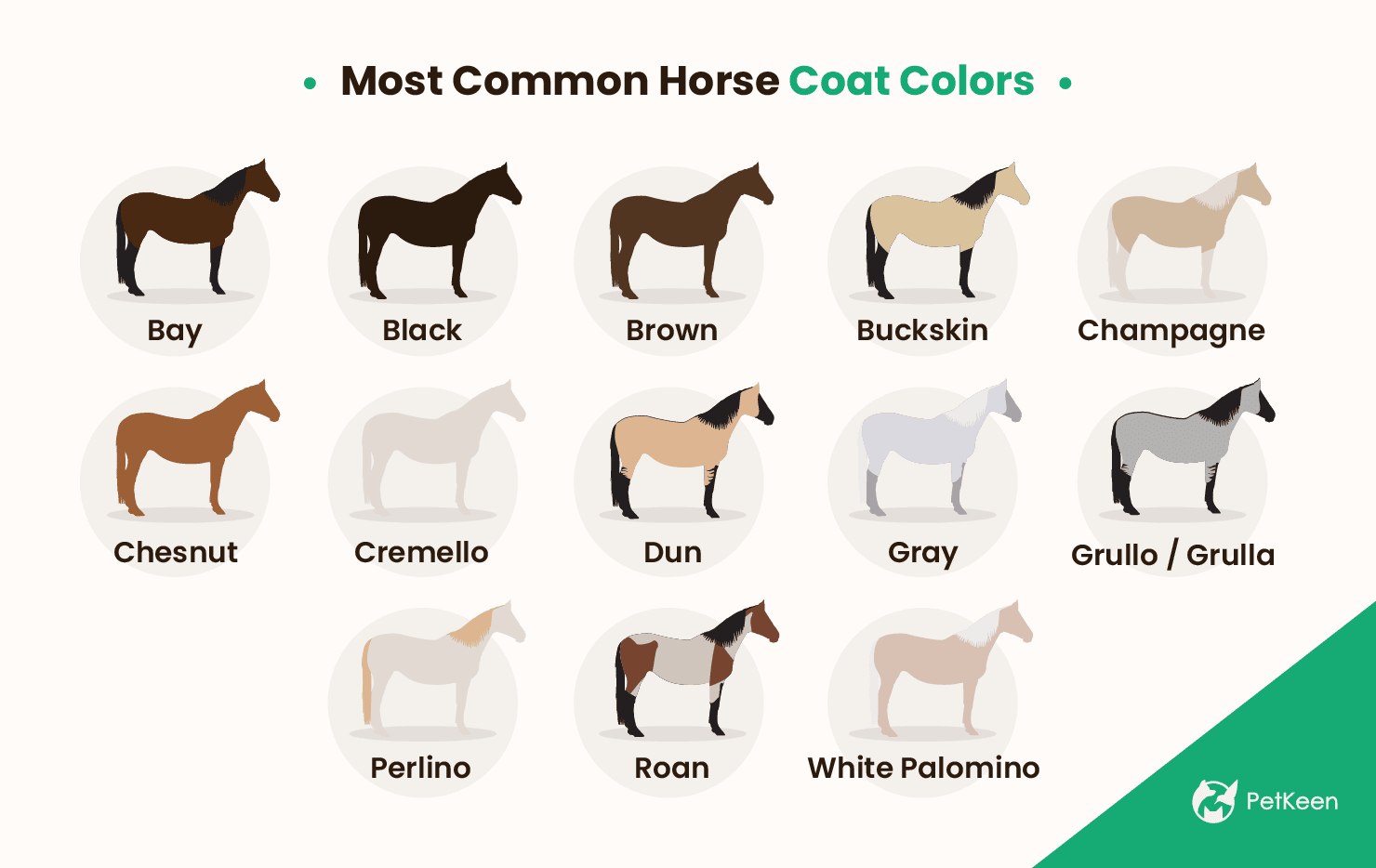
30 Most Common Horse Colors (With Color Chart) Pet Keen
There are only four basic horse colors. Bay, brown, black and chestnut. Everything else is a variation on these four colors.or the absence of color.giving you white. The term ' markings ' refers to the white areas on a horse, usually on the face and legs. The term 'black points' is used to describe a black mane and tail with black legs.

Horse color chart stock illustration Horse color chart, Horse coat colors, Horse coloring
The basic coat colors of a horse are bay, chestnut, and black. White is not considered a base color which is actually the absence of pigmentation in the horse's skin and coat. Brown is sometimes said to be a base coat color but it's not, actually technically there are only 2 base colors red (chestnut) and black.

Horse Colours and Patterns Horse coloring, Horse coat colors, Horse color chart
Step 1: Pigment. The basics begin with the pigment that create the color in horse hair. There are two pigments, one causes black and the other causes red. Which of these colors is expressed is controlled by the extension gene. A horse has two copies, which are written in capital or lowercase letters, depending on if the gene is dominant or.

Horse Color Chart Horse color chart, Horse coloring, Horse coat colors
This comprehensive horse color chart helps you identify horse colors and markings plus gain a deep understanding of Quarter Horse color genetics.
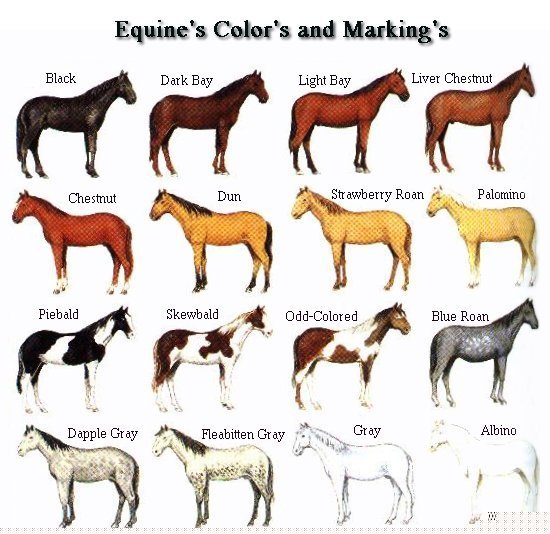
Coat Color in Horses February 2011
1. Horse Colors: Bay A horse is describing as being bay if the body coat is bay, although the shade may differ from dull red, approaching brown, to a yellowish color, approaching chestnut. The tail and mane are black, and there is a black on the lower parts of the legs and tips of the ears. 2. Horse Coat Color: Chestnut

Horse Color Chart by tarot020 on DeviantArt
Horses can be found in a wide variety of different colors but the most common colors are black, bay, chestnut, sorrel, brown, dun, buckskin, gray, pinto (or Paint), spotted, roan, and palomino. One of the rarest coat colors though is white. How many horse colors are there?

American Quarter Horse Color Chart Horse breeds, Horse color chart, Quarter horse
1. Bay. Horses' coats are made of two basic colors of hairs - red and black. What's known as red is actually a reddish-brown color. Bay is the name given to coats that contain a mixture of these two colors. Bay horses can have coats that look anything from a light reddish brown to a dark chocolate shade.

Iowa Grognard Horse Color Charts
Horse color chart To have a head-start of the various colors horses have, here is a comprehensive presentation of the basic colors and some horse breeds where basic colors and combined colors could be seen.

Pin by Joy Watts on USPC Pony Club Horses, Horse breeds, Horse color chart
Horse Colors Chart The coat color of horses is determined by genetics, and changes in genes are responsible for different colors and variations. In addition to the colors listed above, there are several genetic modifiers, including the Agouti, Sooty, Pangaré, Flaxen, and Mushroom that affect equine coat colors.
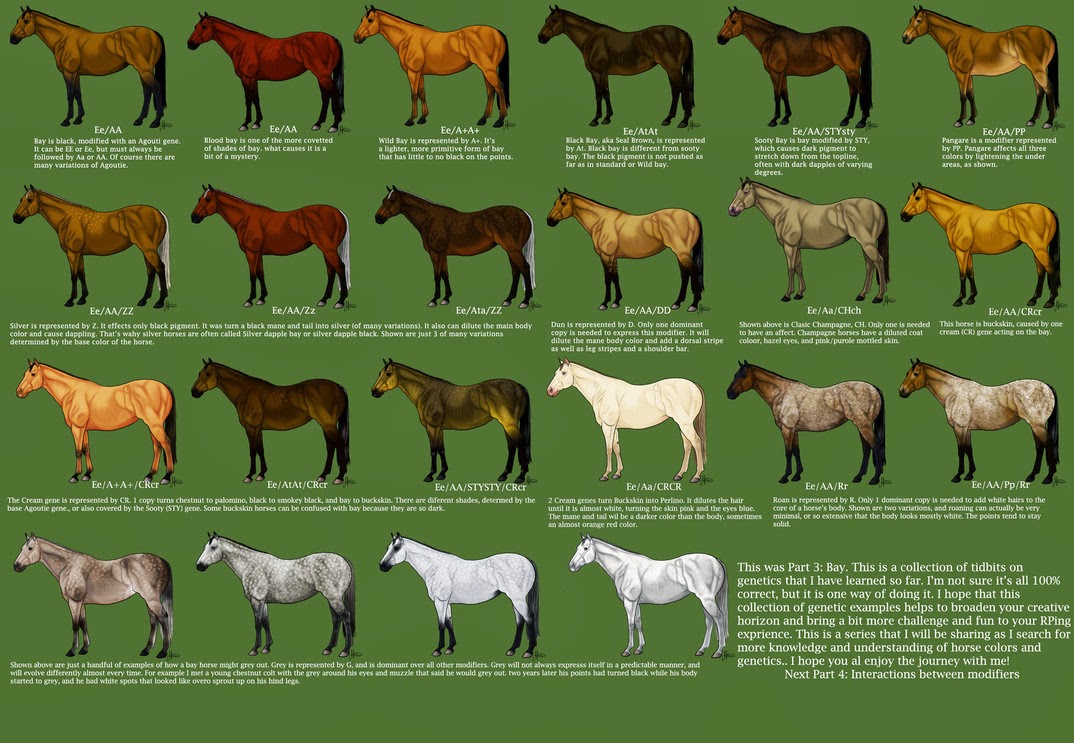
Iowa Grognard Horse Color Charts
What Are Common Horse Colors? Combinations of two pigments (or the lack of them)—red and black—result in four main coat colors: bay, black, chestnut, and gray. The rest of the colors are variations of these four and depend on how a gene is presented in a particular horse. Color Basics Chestnut A chestnut is a red horse.